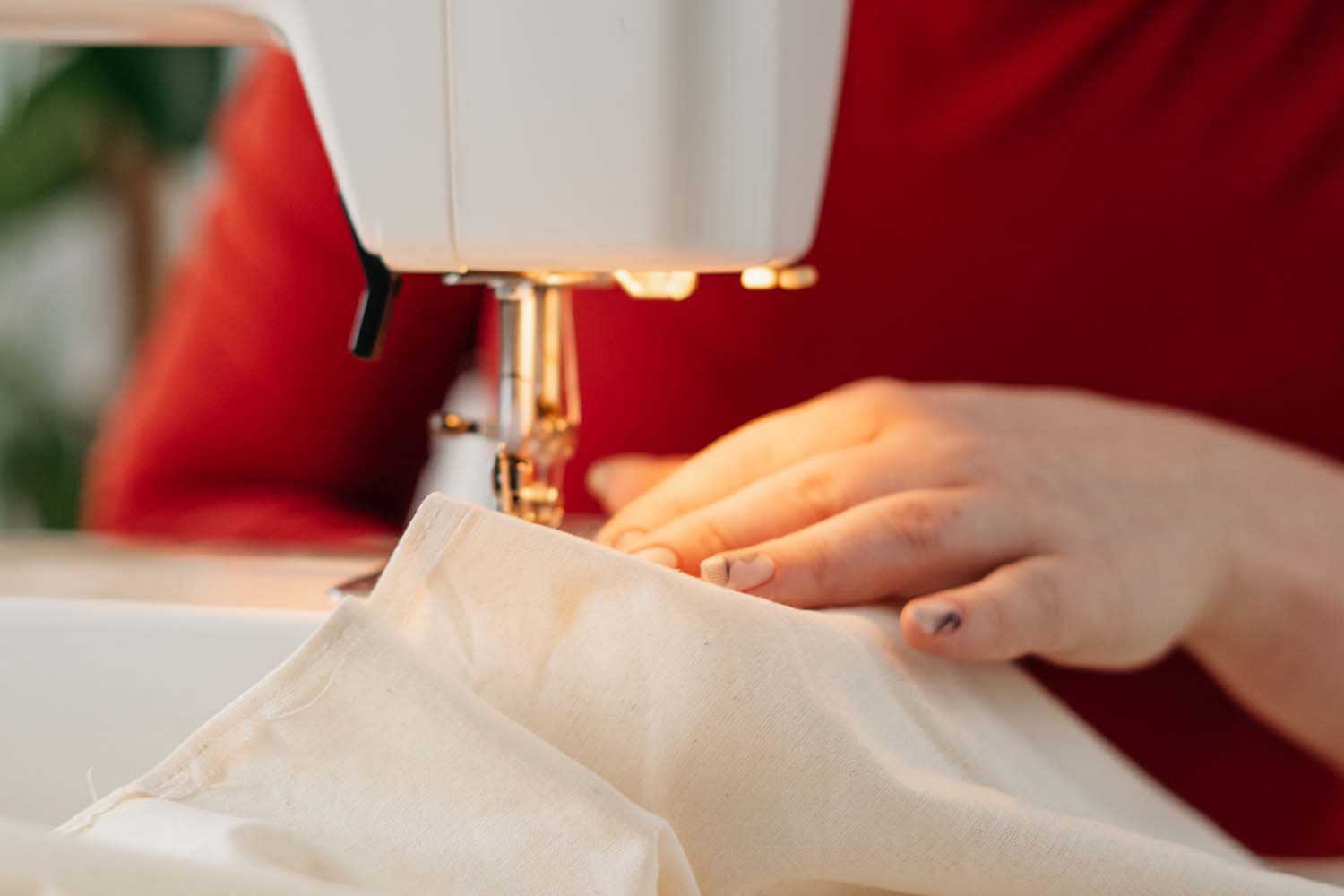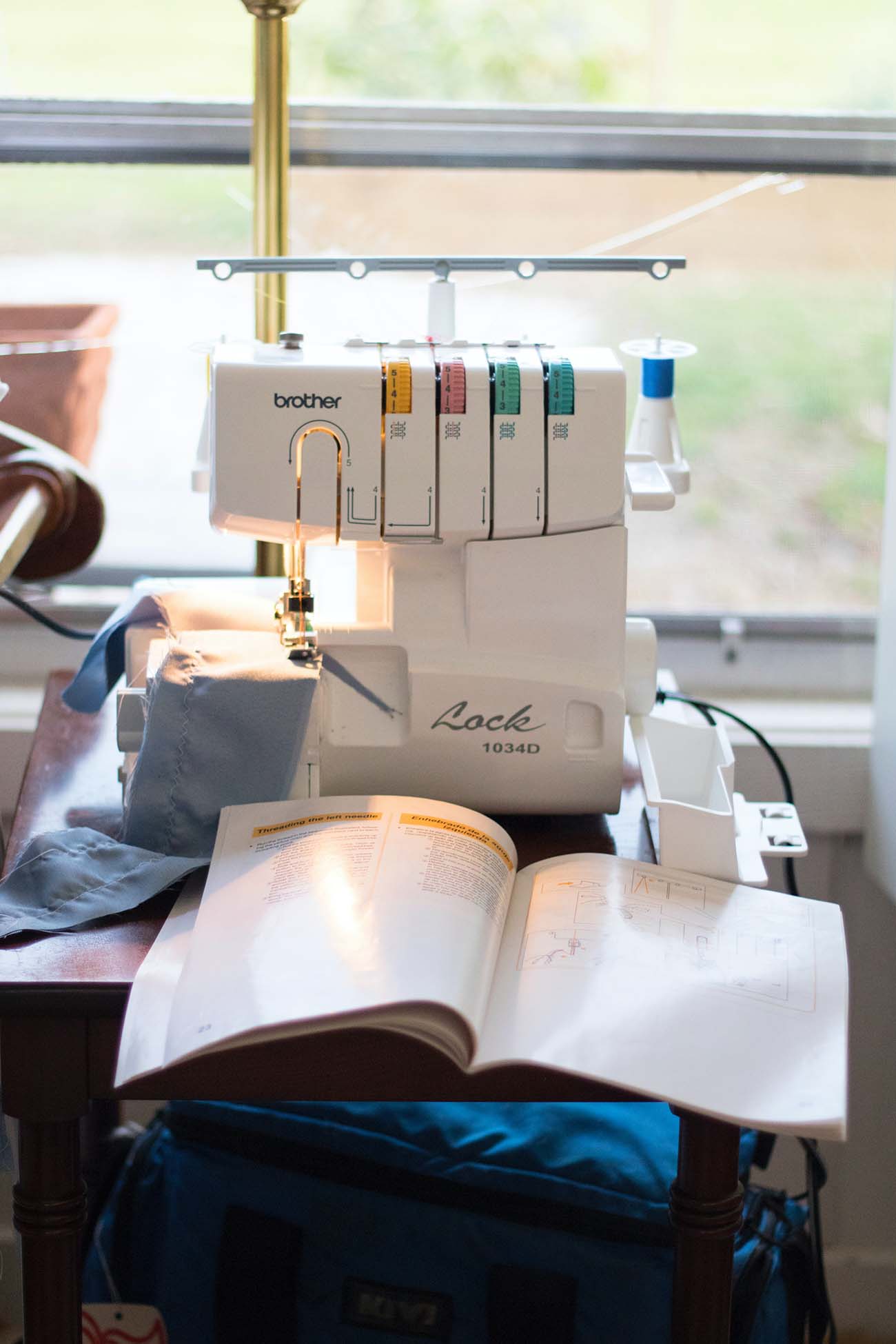Whether you’re operating a small tailoring business from your home or sewing your own clothes, you need the right machine to do the job effectively. One question that comes up regularly in the beginner’s sewing community is whether you should use a serger or a sewing machine for garments. If you are looking for a compact and portable sewing machine that can handle basic sewing tasks with ease, investing in the best mini sewing machines could be a great option for you.
So, what are serger machines, and how do they differ from sewing machines? Should you choose one over the other, or should you be using both?
Read on to discover the answers to these three questions and more.

Photo, Tato Toto.
Serger vs. Sewing Machine: What’s the Difference?
In a nutshell, a serger is a specialised sewing machine. When comparing a serger to a sewing machine, the main difference is that a serger – or overlocker – has different capabilities.
Unlike a traditional sewing machine, a serger can sew a seam, trim off the seam allowance, and enclose the fabric’s edge simultaneously.
Sergers are also called overlocker machines because they use an overlock stitch to fold the fabric over and encase the seam – resulting in a perfectly neat, professional-looking edge.
Sergers also differ from sewing machines because they use multiple spools of thread at once to loop stitches together – this means the stitches sergers produce are more robust than those made by a standard sewing machine.
A serger is not ideal for a beginner because it’ss a complex machine. “It has many different settings and can be difficult to operate” says Jane Kallinger of Sewing From Home. “A serger is a great machine for someone who has some experience with sewing machines and wants to learn more about how to sew professional looking seams” she says.
What Can a Serger Do?
A serger performs three functions to ensure that garments look neat and professional.
A serger automatically trims the seam allowance fabric, stitches the seam, and then overlocks the edge of the material with an overlock stitch to make it neat and protect the fabric from fraying.
However, sergers are not just used to make garments look more professional; they also cut, stitch, and overlock at a tremendous speed. In fact, a serger can perform up to 1700 stitches per minute!
Sergers can perform some of the same functions as a sewing machine – like gathering fabric and making piping, rolled hems, and hem knits.
What Can’t a Serger Do?
While a serger is an essential machine if you want to create professional-looking garments quickly, there are some things that a serger cannot do.
For instance, you’ll still need a sewing machine to create facings, topstitching, zippers, and buttonholes.

Photo, Ashley Worsham-Giaccone.
The Bottom Line: Which Machine is Better for Garments?
The machine you should use will largely depend on the type of fabric you’re using.
When comparing sergers and sewing machines, the most important factor to consider is that both machines have different capabilities. Because sergers and sewing machines are built differently, they are not interchangeable. A serger can’t replace all the functions on your sewing machine.
If you want fast, neat, factory-precise seams on your garments, a serger is the best way to achieve them. While some sewing machines come with an overlock function to enclose the fabric edge, it will never look as professional as a seam made with a serger.
Sergers are also the better option for sewing stretchy or knitted fabrics – like Merino wool – or fabrics that are prone to puckering, like velvet, silk, and lace.








